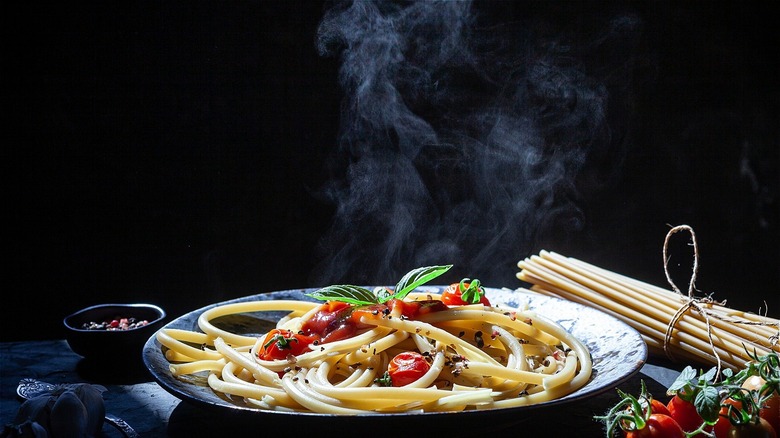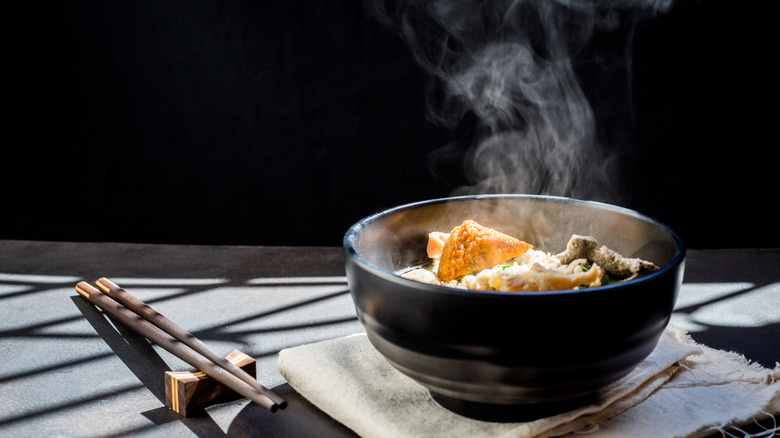How Steam Is Really Created In Food Commercials
Most of us know that a fair bit of trickery goes into making food commercials. After all, your hamburger never looks as good as it does on TV. The patty they use is purposely undercooked. Those grill marks? Painted on. The unattainable height? A product of cardboard and toothpicks (via So Yummy).
Looks are certainly deceiving, but let's face it: No one would buy fast food if it was advertised to us looking like some ingredients dumped into a tortilla. A juicy, colorful burger, on the other hand, teases our senses and gets us hungry. By the time we realize our burger is a lot less colorful and looks like someone sat on it, we've already paid for it.
While most commercials try to make the food as realistic and close to the actual product as possible, food stylists still have to bend reality a little bit to tempt people. Doesn't soup look much more tantalizing when it's giving off a cloud of steam? Here's how it's done.
Feminine hygiene products come to the rescue to make steam
Sure, you could use a steamer or a fog machine to make steam for that hot bowl of soup in a commercial, but where's the fun in that? PetaPixel says that, instead, many commercial producers opt for a microwaved cotton ball, sponge, or tampon to get that steamy effect.
These smaller items are easier to hide behind a product than a bulky fog machine, and look far more realistic. The Daddest also suggests dry ice, as it is easily concealed and creates "a soft, smoke-like fog."
In some cases, such as when the commercial involves a freshly-roasted turkey, food stylists will stuff the turkey with whatever material they want to use to create steam. For one shoot, one food stylist tucked wet paper towels inside the turkey to give the illusion of steam (via The Guardian). So the next time you feel disappointed that your food doesn't look as good as it did in the commercial, you should probably be thankful you don't have to eat the toothpicks or tampons needed to create it.

